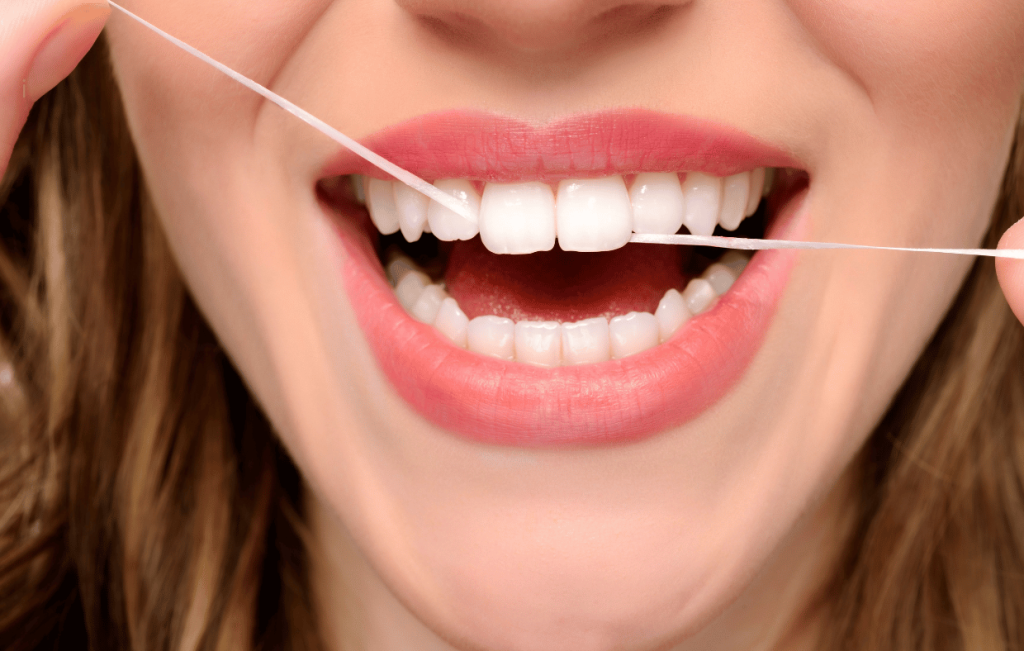Have you ever wondered if can flossing cause tooth pain? — Yes — but there is good news on causes and solutions. Flossing is a crucial part of proper oral hygiene, cleaning out food debris, plaque, and bacteria from the tight spaces between teeth. However, others can suffer from tooth pain or gum pain when flossing.
Flossing pain can be caused by many reasons such as gum disease, tooth decay, poor flossing techniques, and extreme tooth sensitivity. Flossing your teeth regularly is a wonderful way to keep your teeth and gums healthy, but if you apply too much pressure or use the incorrect technique, it can be uncomfortable.
Here are the eight most common reasons for tooth pain when flossing — and how to treat them.
Click here for a great dental care solution!
Which Type of Can Make Your Tooth Hurt When You Floss

- Gum irritation and gum disease
One of the most common causes of pain when flossing is gum disease, also known as periodontal disease. When plaque builds up and the gum tissue becomes inflamed, flossing can be painful, leading to discomfort or even bleeding. At this stage of gum disease, known as gingivitis, gums can be swollen, tender and irritated.
Solution: Top-notch brushing twice a day with a soft or a power toothbrush, along with regular flossing can help reverse gingivitis. With professional deep cleaning and regular checkups from your dental team, you can take care of your gums properly.
- Tooth Decay and Defective Dental Restorations
Narrow spaces due to gaps between teeth or tooth decay or cavities near the gum line can also cause flossing to become painful. Common causes of tooth sensitivity Flossing correctly can be painful if you have sensitive teeth, however, a cracked dental crown or filling (a type of dental restoration) may be damaging to the surrounding area.
Solution: If you experience consistent pain when flossing, a visit to the dentist is the way to go. Your dental professionals may find decay or defective restorations and suggest appropriate treatment.
- Dentin Hypersensitivity and Tooth Sensitivity
Tooth sensitivity, or dentin hypersensitivity, happens when the tooth enamel that protects your teeth wears down, exposing the sensitive dentin beneath. That can make for an uncomfortable flossing experience, especially if you have sensitive spots just above the gum line.
Answer: Try desensitizing toothpaste and avoid excessive pressure while flossing. Try different kinds of floss like wider floss or a water flosser that can help reduce discomfort.
- Improper Flossing Technique
A poor dentifrice technique, like snapping dental floss between teeth (with too much power), can indeed injure the gums and even hurt. Over time, improper technique can cause minor burns and can cause your gums to recede.
The right way to floss is to ease the floss between two teeth with a back-and-forth motion, cleaning below the gum line and practicing light pressure.
- Experiencing Sensitive Gums and Gum Recession
(If you have gum recession due to poor dental hygiene — or aggressive brushing with a hard-bristled toothbrush — your flossing can expose sensitive areas or be painful). Gum recession can also lead to a plaque increase, aggravating oral health issues.
What to do: Use a soft-bristled toothbrush and floss gently so as not to aggravate the gums further. Gums should be assessed during regular dental checkups to monitor bone health and prevent further recession.
- Tight Spaces Between Teeth
There are some who have tight spaces between their teeth naturally that make it really difficult or painful to floss. Most difficulties with threader floss involve navigating areas with tight contacts where standard string floss can be tricky.
Solution: Interdental brushes or a water flosser may provide a more comfortable way to clean between teeth.
- Bone Loss and Dental Problems
Advanced gum disease can lead to bone loss that causes teeth to feel more sensitive while flossing. Other causes of pain could include issues with your teeth — including root canal infections or dental implants that haven’t healed properly.
Solution: If you have lost bone or have serious dental issues, get professional dental treatment. Your dentist can suggest specialized care options to help prevent further damage.
- Final Restorative Retainer and Dental Appliances
If you have a permanent retainer, or other dental appliances, using dental floss around these areas may be difficult. Regular string floss might not be the right option.
This means, if you have permanent retainers behind your front teeth, you need to use a floss threader or a water flosser to get between your teeth (i.e. Around your retainers) effectively.
How to Floss Without Pain: The Best Practices

Now that we’ve covered the reasons you might be experiencing pain when flossing, let’s talk about how to avoid discomfort while keeping up with your oral health.
Use the Right Technique — Always slide the floss gently between teeth, curving it around the gum line.
Select the Correct Floss — Various floss, for instance, thicker floss or waxed floss, can make you more agreeable when you floss.
What about a Water Flosser – A water flosser is a great option for someone looking to clean between their teeth without irritation, such as someone with sensitive gums or dental restorations.
Dial Down the Pressure – Using too much pressure can damage and even recession.
Use an Electric Toothbrush – Electric toothbrushes may lead to better overall oral health and reduce plaque buildup, which makes flossing easier.
Maintain Routine Dental Checkups – Going to your dentist at regular intervals helps with early detection of dental issues.
Stick to Good Brushing and Flossing Habits – You can only keep plaque and gum disease at bay with appropriate brushing and consistent flossing.
Be on the lookout for chronic pain — If pain is persistent; professional dental assistance is important to rule out serious issues like periodontal disease or faulty dental restorations.
Conclusion
Flossing is an essential aspect of good dental hygiene, and while it does come with some discomfort, it can also be a sign something deeper is wrong (think gum disease, tooth decay, and more) if flossing hurts your teeth and/or gums.
The good news is that most flossing-induced pain is avoidable with proper technique, good care, and regular checkups with your dental team.
If you feel consistent pain when you floss, you should visit an oral health provider for a dental visit to see what most likely went wrong and how to treat it. If you take good care of your teeth and gums, your teeth will be strong and healthy for many years to come.


